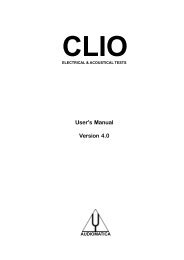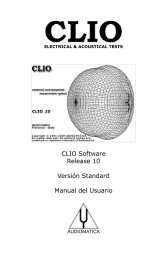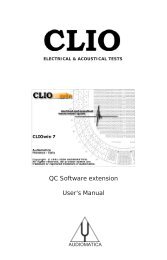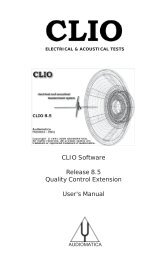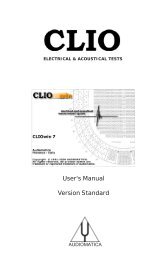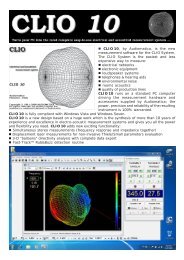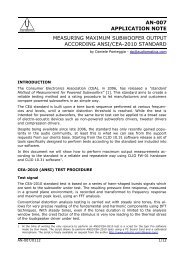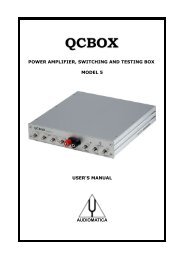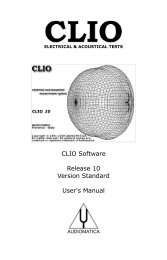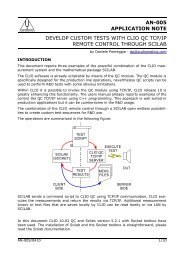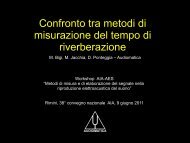CLIOwin 6.5 PCI User's Manual - Audiomatica Srl
CLIOwin 6.5 PCI User's Manual - Audiomatica Srl
CLIOwin 6.5 PCI User's Manual - Audiomatica Srl
You also want an ePaper? Increase the reach of your titles
YUMPU automatically turns print PDFs into web optimized ePapers that Google loves.
110.0<br />
CLIO<br />
7.50<br />
dBSPL<br />
ms<br />
100.0 6.00<br />
90.0 4.50<br />
80.0 3.00<br />
70.0 1.50<br />
60.0 0.00<br />
20 100 1k Hz<br />
10k 20k<br />
Figure 10.25<br />
It was obtained selecting Excess in the Setting Dialog and clicking on the Group Delay<br />
button.This graph represents the distance of the sound source from the microphone vs.<br />
frequency. As long as the distance is constant the system is minimum phase and we<br />
are in presence of a well defined acoustic centre. Recall from previous paragraphs that<br />
we have reliable data down to 200Hz because of the time windows. As we deal with a<br />
tweeter we will consider the 2k-20k frequency range where the marker reads a constant<br />
2.01ms. We will use this value to operate a time shift that removes the time of sound<br />
fly. This is accomplished from the Processing Tools Dialog, selecting Time shift and<br />
typing the value we found as in Fig.10.26.<br />
Figure 10.26<br />
Clicking Ok we can finally display the processed phase, minimum phase and magnitude<br />
response of our device in Fig.10.27. We used the term "processed phase" here and this<br />
is not casual.<br />
98 Chapter 10 - MLS



